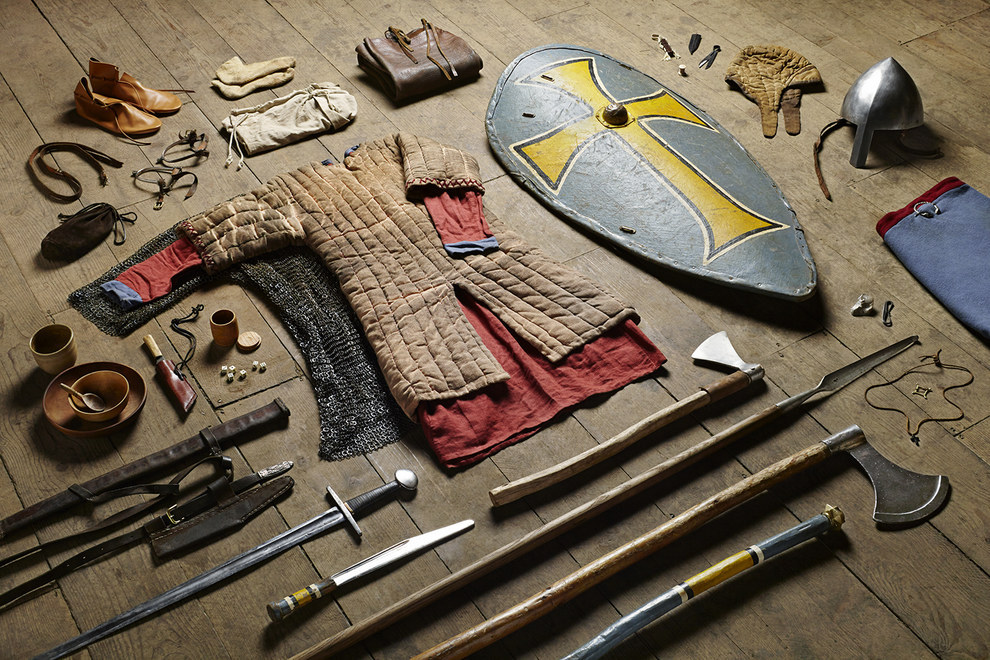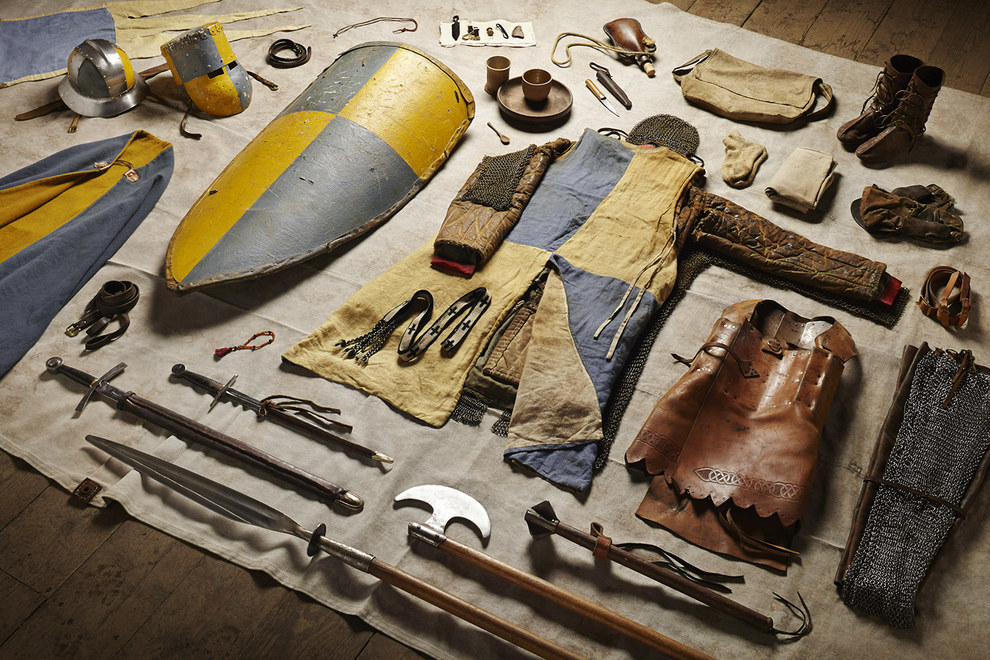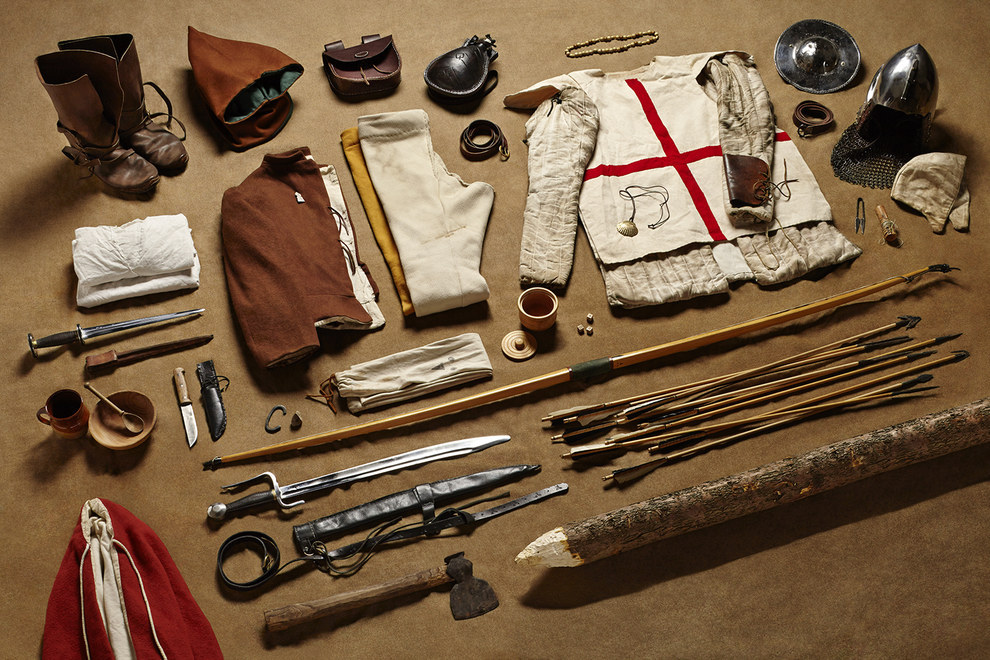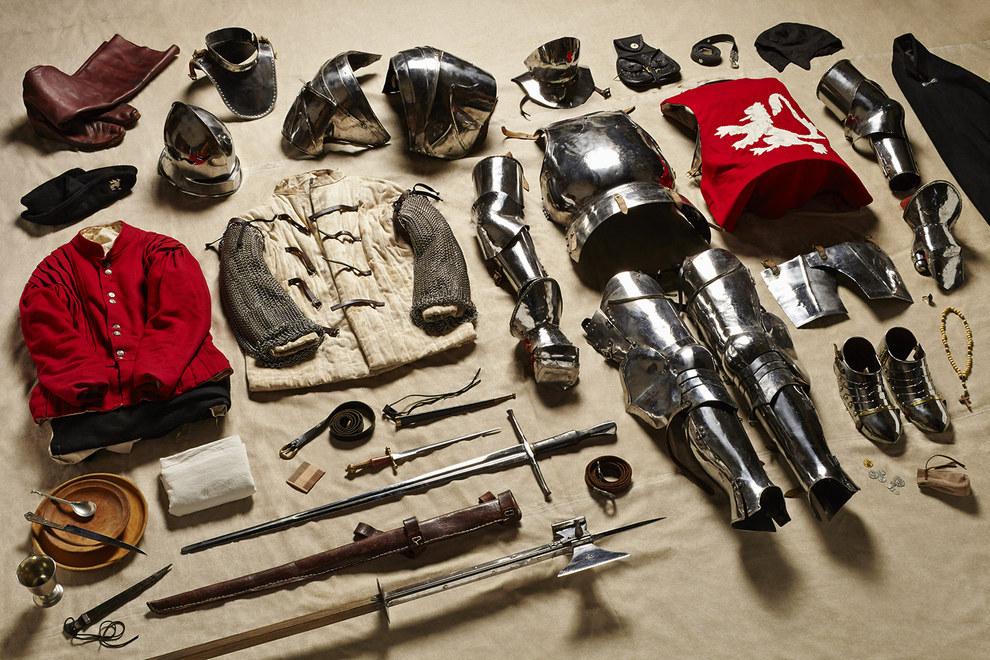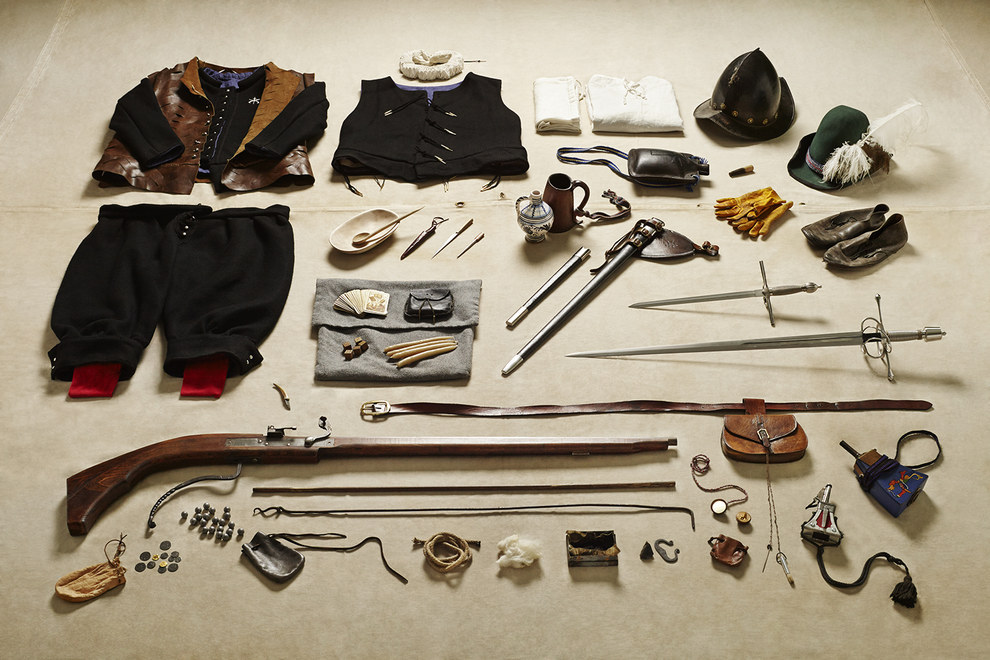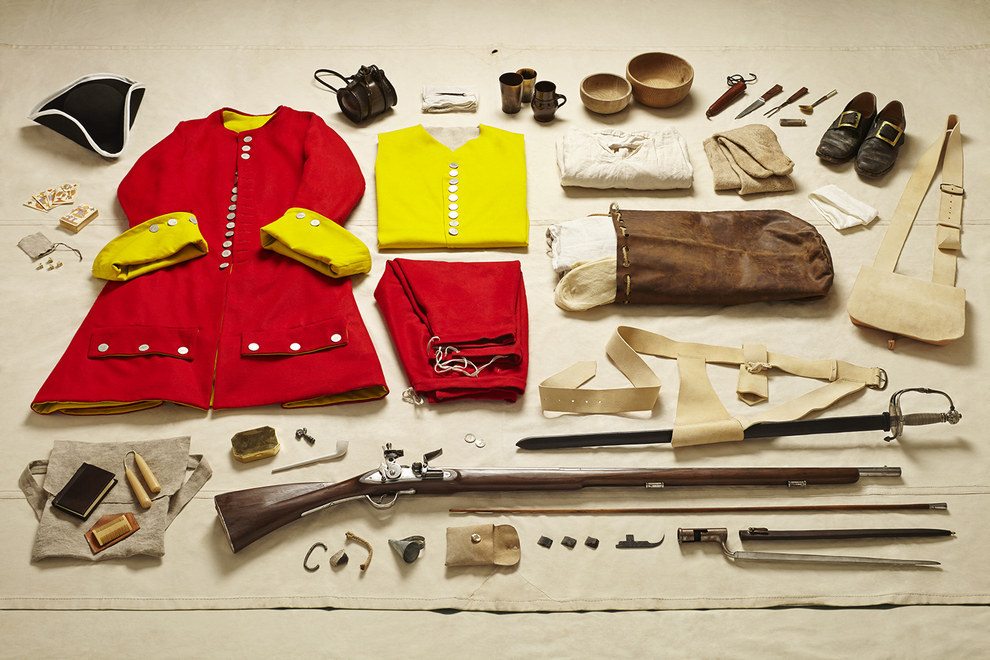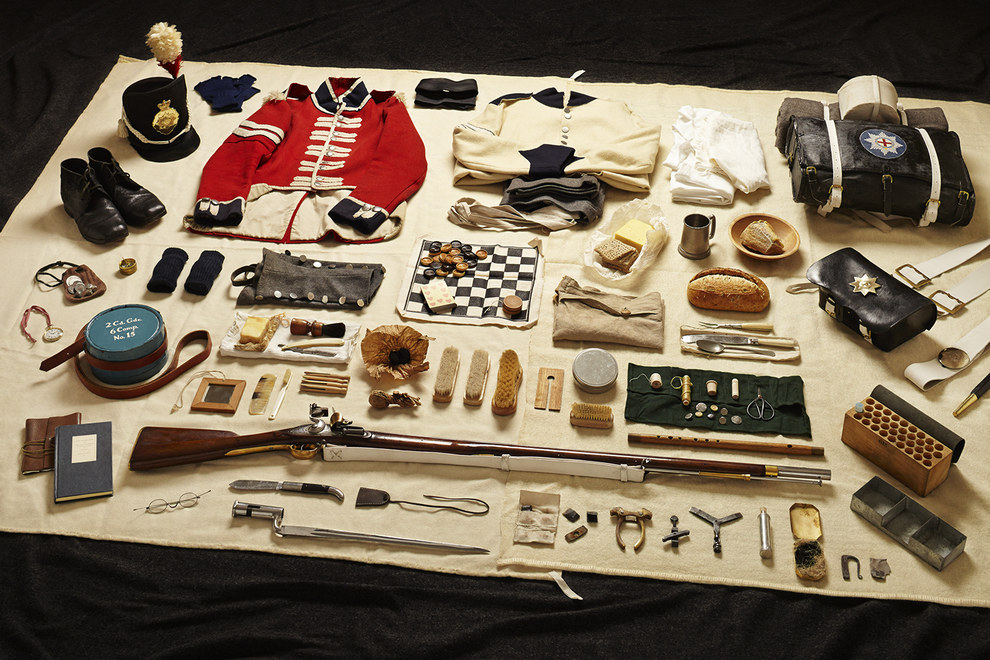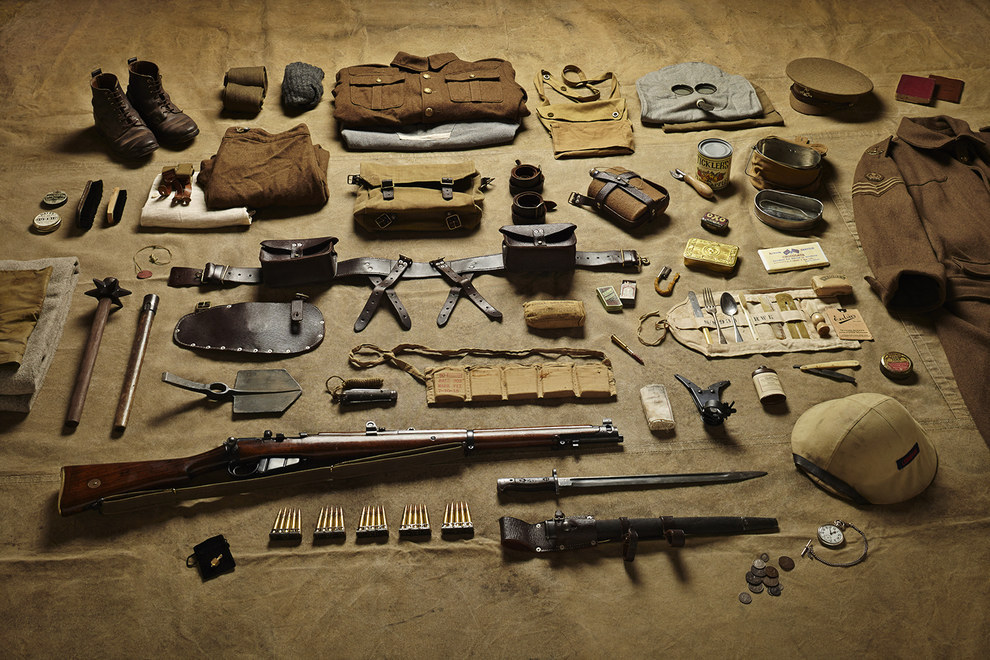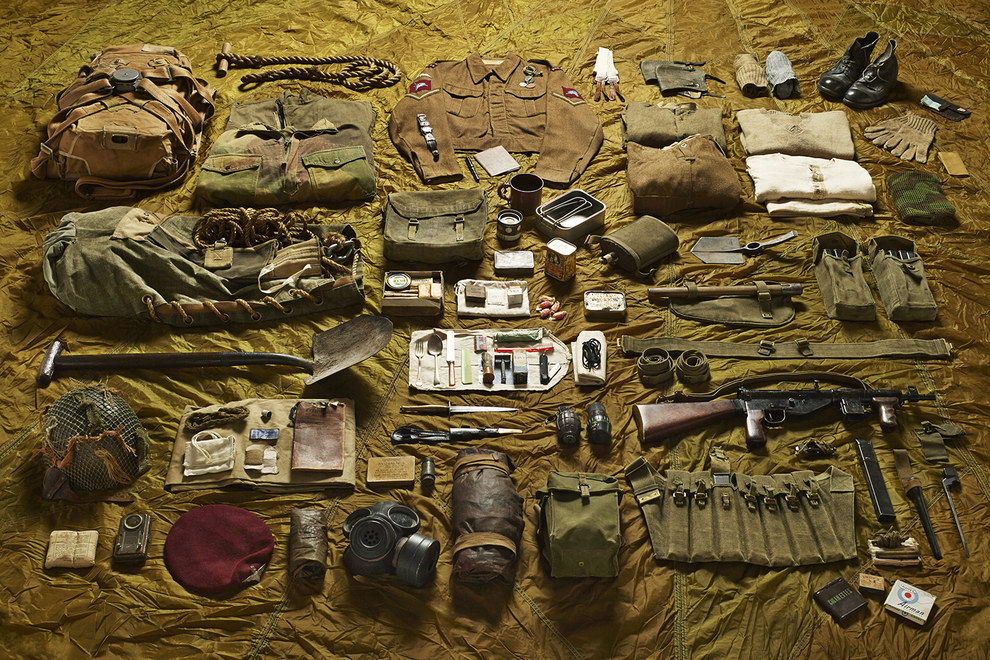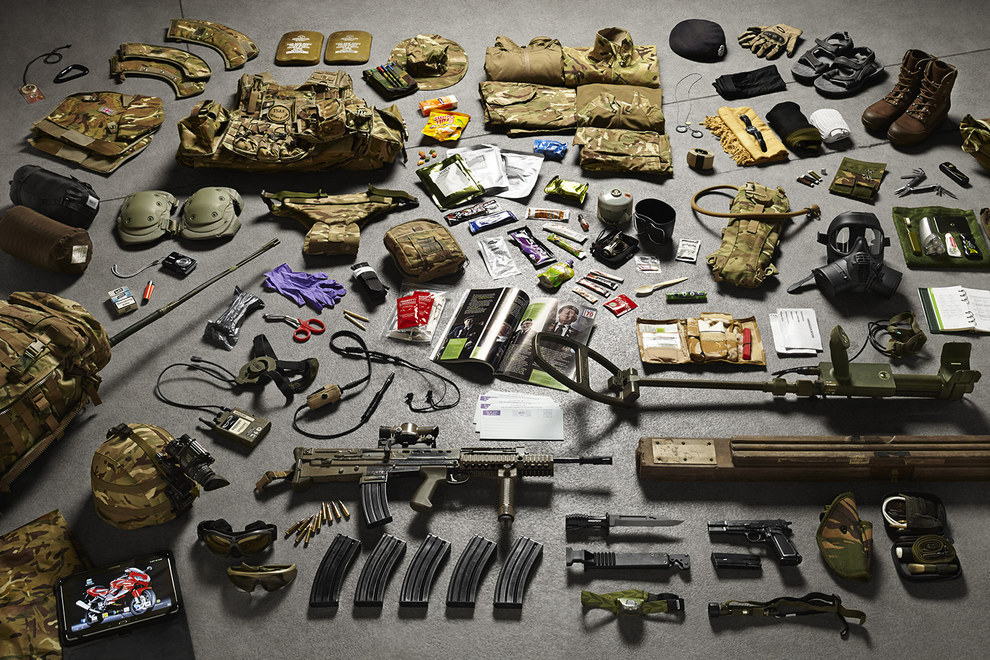|
|
|
Huscarl, Battle of Hastings, 1066.
|
|
|
|
Soldiers in 1066 carried a variety of weapons for different purposes, but also had keepsakes such as dice and, most interestingly, a spoon. Every British soldier’s kit feature includes a spoon.
|
|
Mounted Knight, Siege of Jerusalem, 1244.
|
|
|
|
In the Crusades, kit included rosary beads and a wider selection of protection.
|
|
Fighting archer, Battle of Agincourt, 1415.
|
|
|
|
One British tactic that came to the fore at Agincourt was the planting of wooden stakes to defend against cavalry, hence these wooden stakes.
|
|
Yorkish man-at-arms, Battle of Bosworth, 1485.
|
|
|
|
|
|
Trained band cavalryman, Tilbury, 1588.
|
|
|
|
The advent of guns meant more distant fighting and a reduction in the amount of armour.
|
|
Private sentinel, Battle of Malplaquet, 1709.
|
|
|
|
|
|
Private soldier, Battle of Waterloo, 1815.
|
|
|
|
As campaigns grew in length, and weapons became more complex, the amount of kit grew.
|
|
Private soldier, Battle of the Somme, 1916.
|
|
|
|
|
|
Lance corporal, parachute brigade, Battle of Arnhem, 1944.
|
|
|
|
|
|
Close-support sapper, Helmand Province, 2014.
|
|
|
|
The number of items has become much higher as technological improvements allow for lighter gear. But there’s still a spoon.
|
|
|
